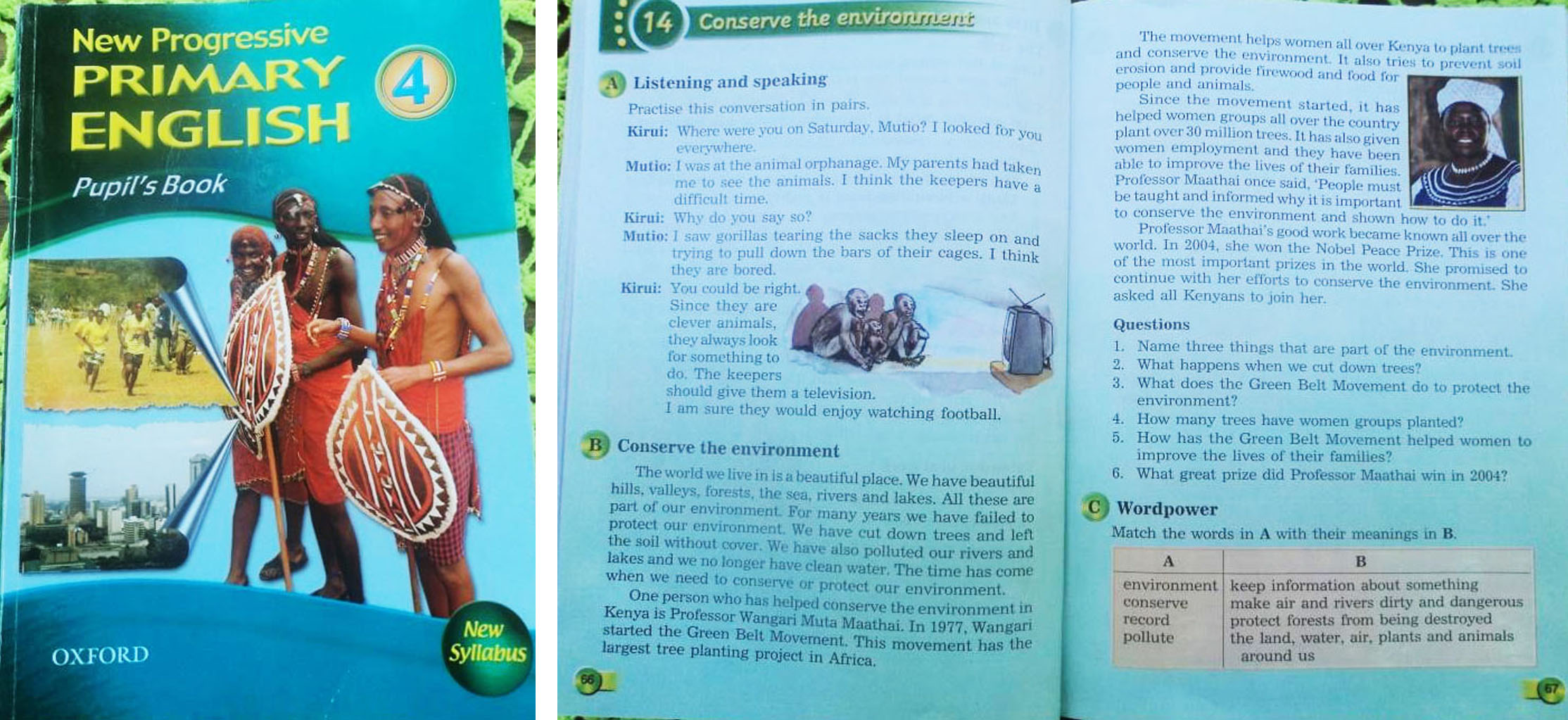GBM Blog
Professor Wangari Maathai and Green Belt Movement in the primary school curriculum
Written by Paul Thiong'o, Project Officer at the Green Belt Movement
“Environmental Education” in the context of Environmental management and coordination act of 1999, includes the process of recognizing values and clarifying concepts in order to develop skills and attitudes necessary to understand and appreciate the inter-relatedness among man, his culture and his biophysical surroundings;
The Government of Kenya has taken Environmental education in children seriously. This is aimed at ensuring that school children appreciate the environment and thereby become better environmental stewards now and in the future.
To better inculcate the culture of environmentalism in primary school pupils, environmental education has been included in the school curriculum. Case studies of prominent environmentalists such as Professor Wangari Maathai and the Green Belt Movement are used to enhance their knowledge.

This has enabled pupils to gain inspiration and passion in environmental conservation.
One such pupil is Ruth Edna Achieng from Kisumu County; she is in class four at Kuoyo Primary School.
A few days ago, the class teacher taught them about the need for environmental conservation in Kenya and after the lesson, gave the day’s homework.
Upon reaching home, she found her mother Rose Adhiambo and her fellow GBM Community Trainers of Trainees discussing and commending the Green Belt Movement after receiving solar Lamps and improved cook stoves from the Organization to enhance their trainings in the community. Ruth quickly narrated to her mother about the day’s lesson and urged her and the other women to assist in doing her homework.
She was delighted to learn that her mother is one of the women from the region who has been empowered by the Green Belt Movement. Her mother trains other women in the village about raising tree seedlings for planting in their farms and the importance of installing improved cook stoves.
 For Ruth, knowledge on environmental conservation could not come at a better time. She has a mother who appreciates the environment and who has gained knowledge and skills on transformative leadership, natural resources management and sustainable clean energy. Her mother is among 407 community leaders who have been empowered to become agents of change in their community.
For Ruth, knowledge on environmental conservation could not come at a better time. She has a mother who appreciates the environment and who has gained knowledge and skills on transformative leadership, natural resources management and sustainable clean energy. Her mother is among 407 community leaders who have been empowered to become agents of change in their community.
